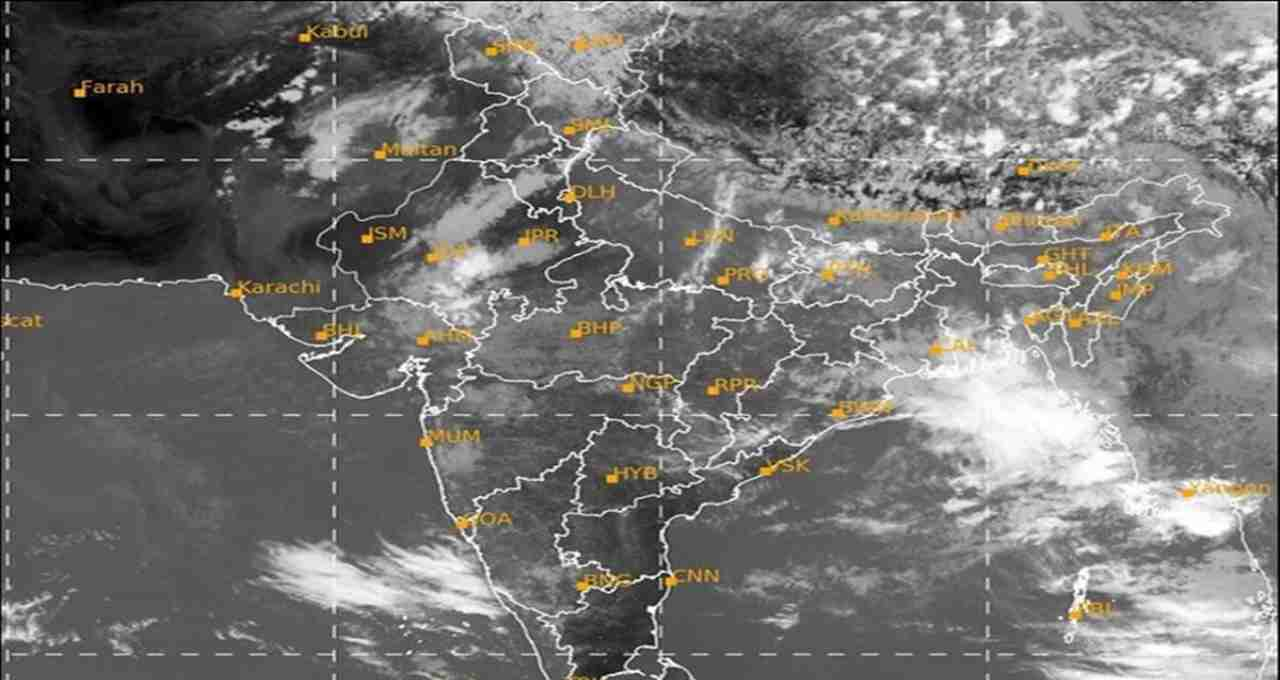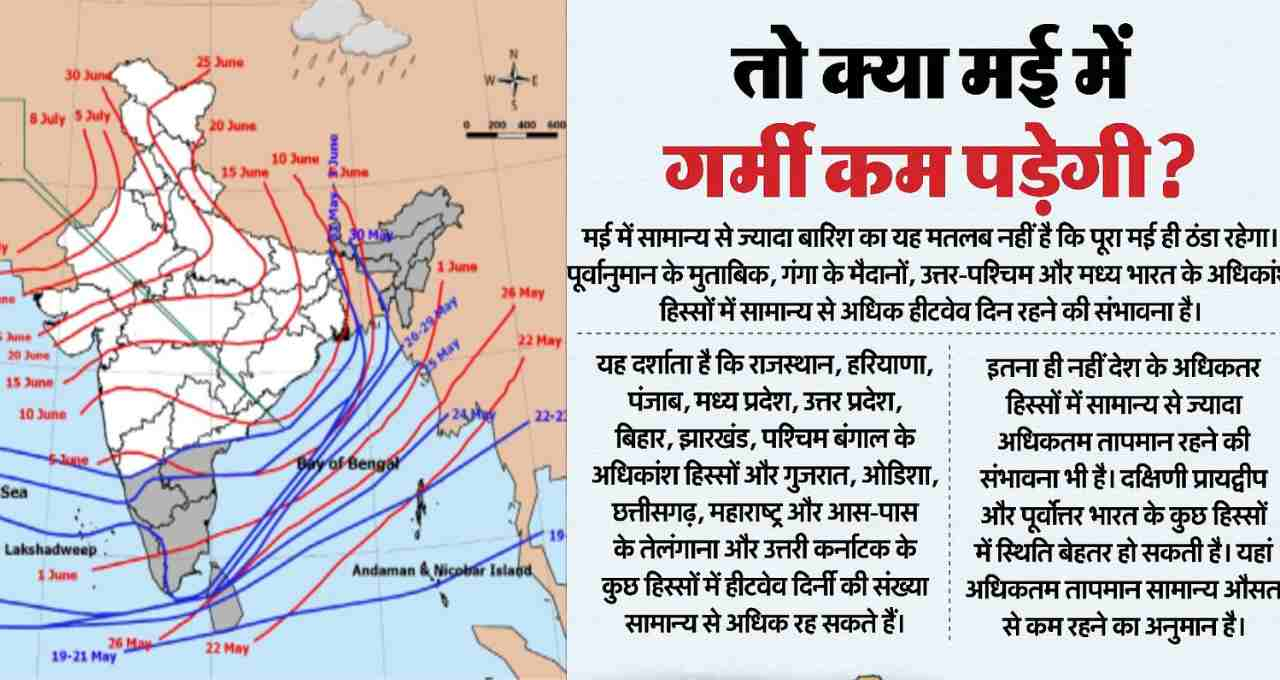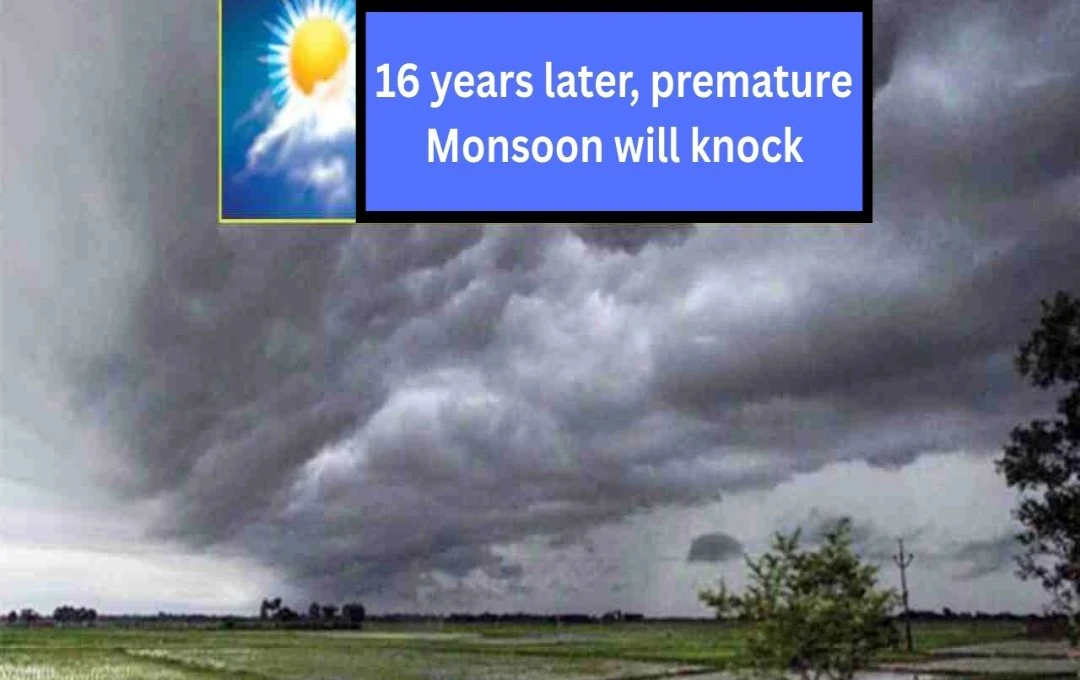Amidst the scorching heat across most parts of the country, a sudden weather shift is anticipated. The Meteorological Department has announced that the monsoon is likely to arrive in Kerala earlier than its usual date, around May 26th.
Weather: Amidst the intense heatwave across the nation, the Meteorological Department has projected that the monsoon may arrive in Kerala approximately six days earlier than its scheduled date, i.e., on May 26th. Typically, the monsoon reaches Kerala on June 1st; however, this year marks the earliest arrival since 2009. This unusual change has generated a mixture of excitement and alertness among farmers, the general public, and authorities.
Monsoon Onset: Time and Location
According to the Meteorological Department, the southwest monsoon will begin spreading over the southern parts of the Arabian Sea, Maldives, Lakshadweep, Kerala, and some areas of Tamil Nadu from May 22nd. Subsequently, it will gradually progress towards the northern and eastern parts of the Bay of Bengal and the northeastern states. This progression will rapidly cover the entire country, bringing greenery and relief by the second week of July.
The typical cycle of the southwest monsoon in India follows a traditional pattern. It usually reaches Kerala around June 1st, and by July 8th, rainfall spreads across the entire country. It begins its retreat from northwest India in mid-September and completely withdraws by mid-October. This year's early arrival of the monsoon might cause some alterations in this usual cycle.
Comparison with Previous Years:

Variations in the monsoon's onset dates have been observed in recent years. In 2023, the monsoon reached Kerala on May 30th; in 2022, it arrived on May 29th, while in 2021 and 2020, it commenced on June 3rd and June 1st, respectively. This is the earliest monsoon arrival since 2009, making it a noteworthy event for meteorologists.
This early onset will aid farmers in preparing their crops in advance, but the possibility of heavy rainfall and stormy weather in certain areas remains.
Pre-Monsoon Weather Alert
Pre-monsoon weather instability is being observed in several states. Rainfall ranging from 64.5 to 115.5 mm is anticipated in parts of Andhra Pradesh, Bihar, Jharkhand, Marathwada, Nagaland, Mizoram, Tripura, sub-Himalayan West Bengal, and Sikkim. Furthermore, b winds, lightning, thunderstorms, and hailstorms are expected in Punjab, Haryana, Uttar Pradesh, Rajasthan, and Uttarakhand between May 21st and 26th.
The Meteorological Department attributes this adverse weather to a trough line extending from central Pakistan across Rajasthan, Haryana, Uttar Pradesh, Bihar, and West Bengal to northern Bangladesh. This trough is likely to cause sudden downpours and b winds in these regions.
Meteorological Department Data:

According to the Indian Meteorological Department's 50-year average data, rainfall between 96% and 104% of 87 cm is considered normal. Rainfall below 90% is classified as deficient, while rainfall between 105% and 110% is considered above normal. The IMD had predicted in April that this year's monsoon would bring above-normal rainfall, and the impact of El Niño would be minimal in India. El Niño conditions typically lead to below-normal rainfall, but this is not expected in 2025.
Implications for Farmers and the Public:
The early arrival of the monsoon will significantly benefit farmers. They can commence crop sowing earlier and make better irrigation arrangements. However, b winds and storms might damage crops in some areas, necessitating precautionary measures. In cities, the monsoon rains will provide relief from the intense heatwave and increase water availability, which is crucial for areas facing water scarcity.
While the early monsoon will be advantageous for agriculture, sudden weather changes may also cause floods, waterlogging, and hailstorms. Therefore, the administration and local authorities must prepare for such eventualities. The public should also adhere to alerts issued by the Meteorological Department.













